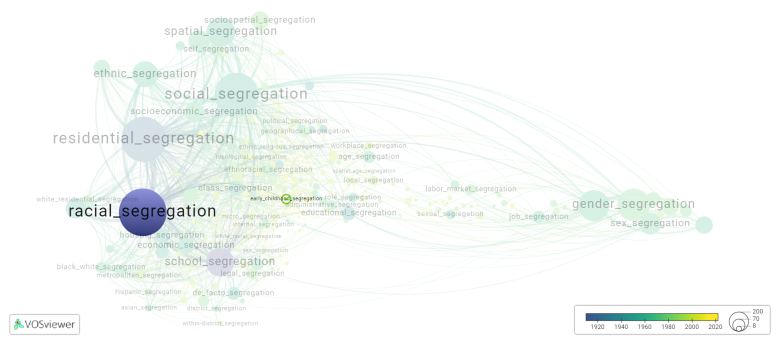Early childhood segregation
Date and country of first publication[1][edit | edit source]
2000
United States
Definition[edit | edit source]
Early childhood segregation refers to the practice of separating young children, typically in educational settings, based on certain characteristics such as race, socio-economic status, and abilities. It can occur in various forms, including racial segregation, economic segregation, and segregation of children with disabilities.
In the past, racial segregation in early childhood education was prevalent in many countries, such as the United States, where laws were enacted to enforce the separation of Black and white children in schools. This segregation was a result of discriminatory practices and the belief in racial superiority. It was eventually declared unconstitutional and abolished, but traces of racial segregation can still be found in some educational systems.
Economic segregation in early childhood education refers to the division of children based on their families' socio-economic status. This can result in children from low-income families attending separate schools or classrooms from their more affluent peers. Economic segregation can lead to unequal access to resources and opportunities, perpetuating social inequality.
Segregation of children with disabilities involves separating children with disabilities from their typically developing peers. This practice was historically prevalent, with children being placed in special education programs or separate schools. However, there has been a shift towards inclusive education, where children with disabilities can learn alongside their peers without disabilities. Inclusive education promotes diversity and provides better opportunities for social integration and learning for all children.
Early childhood segregation can have negative effects on children's social and academic development. It can create divisions and reinforce stereotypes, limiting children's understanding and acceptance of diversity. In contrast, inclusive educational practices promote equal opportunities for all children to learn and thrive together, fostering empathy, respect, and collaboration.
See also[edit | edit source]
Related segregation forms[edit | edit source]
Early childhood segregation is frequently discussed in the literature with the following segregation forms:
This visualization is based on the study The Multidisciplinary Landscape of Segregation Research.
For the complete network of interrelated segregation forms, please refer to:
References[edit | edit source]
Notes[edit | edit source]
- ↑ Date and country of first publication as informed by the Scopus database (December 2023).
At its current state, this definition has been generated by a Large Language Model (LLM) so far without review by an independent researcher or a member of the curating team of segregation experts that keep the Segregation Wiki online. While we strive for accuracy, we cannot guarantee its reliability, completeness and timeliness. Please use this content with caution and verify information as needed. Also, feel free to improve on the definition as you see fit, including the use of references and other informational resources. We value your input in enhancing the quality and accuracy of the definitions of segregation forms collectively offered in the Segregation Wiki ©.
Early childhood segregation appears in the following literature[edit | edit source]
Landrine H., Klonoff E.A. (2). Racial segregation and cigarette smoking among blacks: Findings at the individual level. Journal of Health Psychology, 5(2), 211-219. SAGE Publications Ltd.https://doi.org/10.1177/135910530000500211

